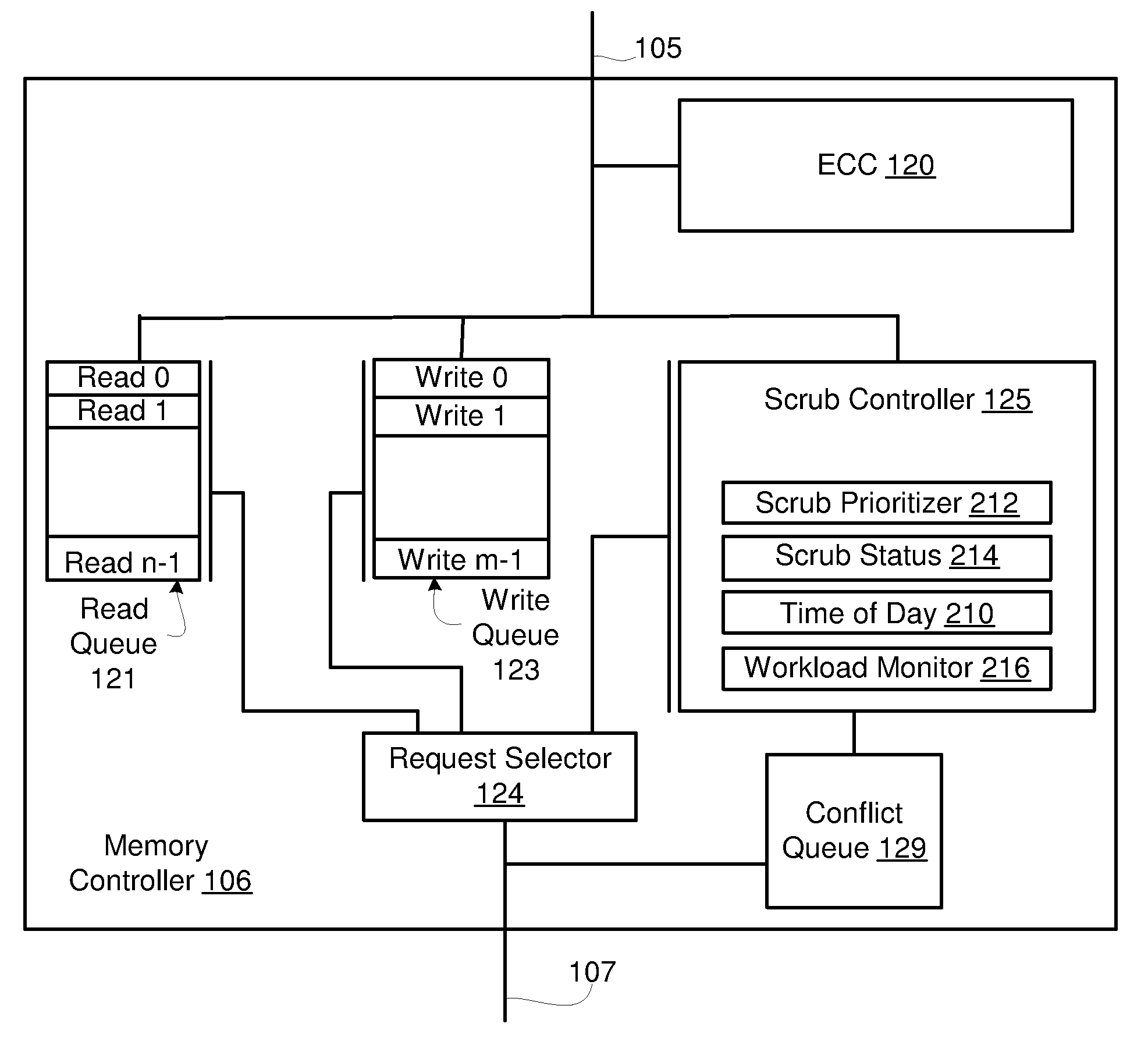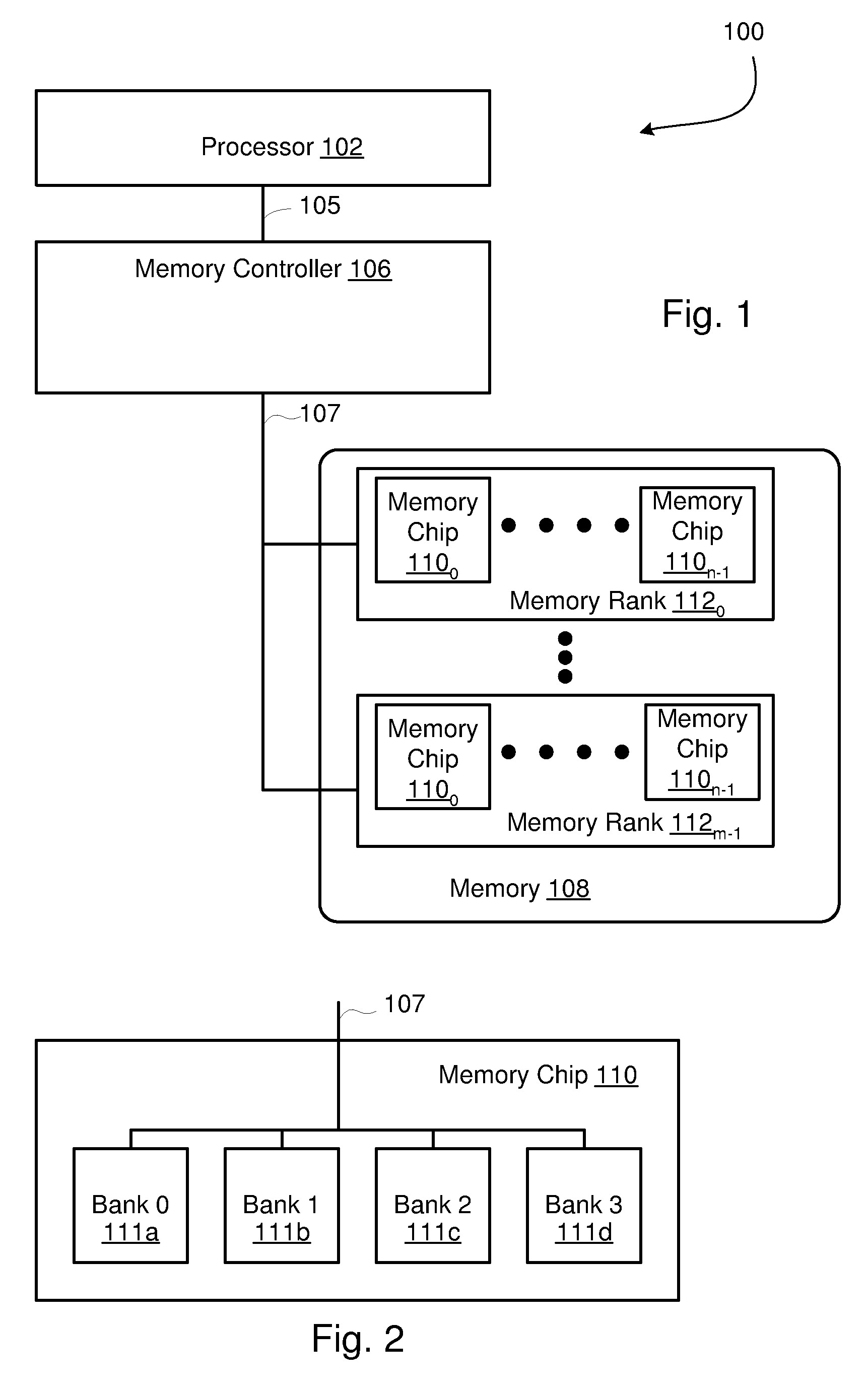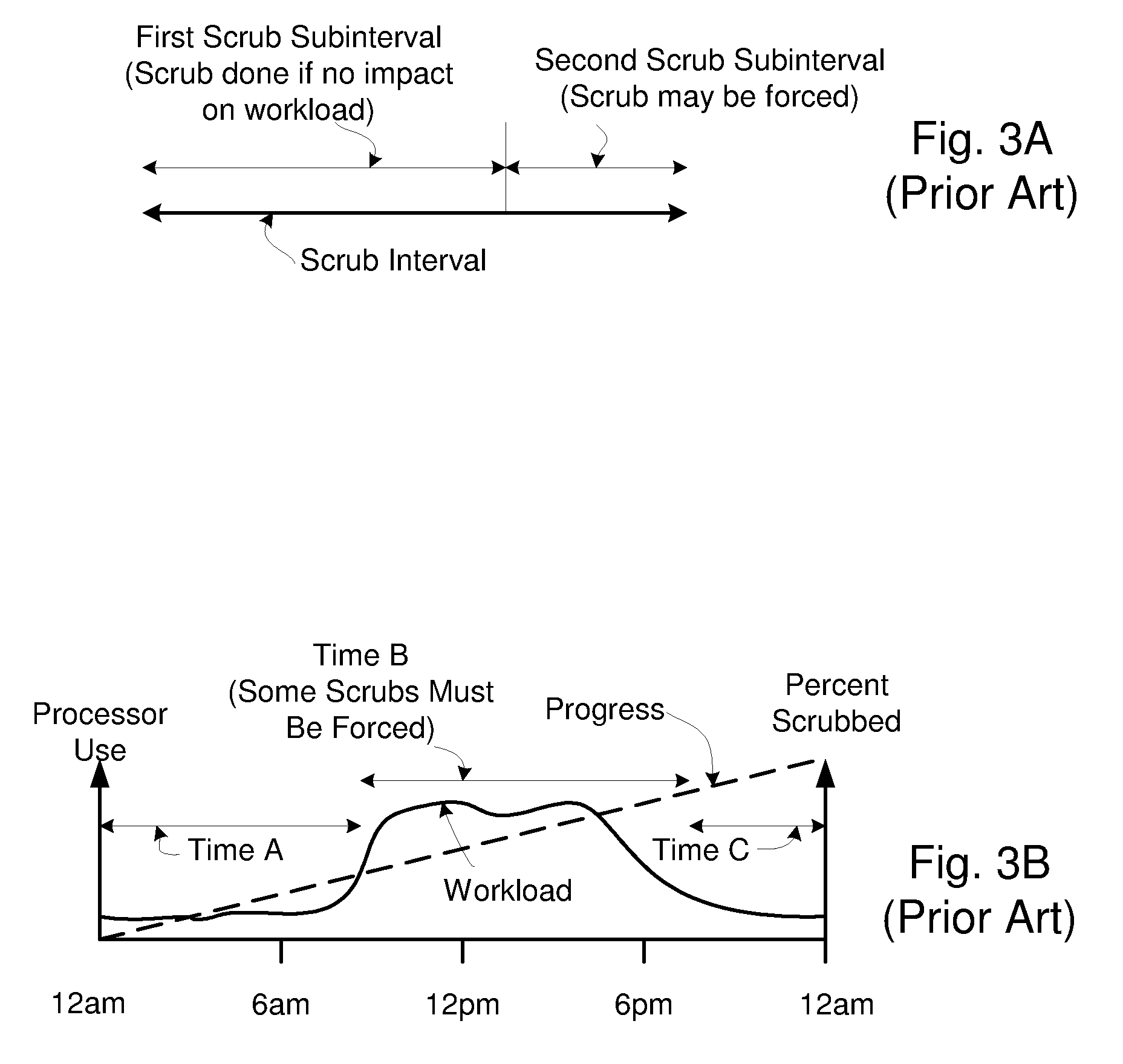Efficient Scheduling of Background Scrub Commands
a scrub command and scrub command technology, applied in the field of memory controllers in computer systems, can solve the problems of hard or soft errors, corruption presents itself as a “soft error”, and the hard error is a permanent error, so as to reduce or eliminate the impact of scrub on the throughput of the computer system
- Summary
- Abstract
- Description
- Claims
- Application Information
AI Technical Summary
Benefits of technology
Problems solved by technology
Method used
Image
Examples
embodiment 700
[0062]FIG. 8 shows a high level flow chart of a method embodiment 700 of the invention. Method 700 begins at step 702. In step 704, a scrub slack value is determined. If the scrub slack value is “positive”, scrubbing is “ahead of schedule”, that is, is in the region denoted ahead 131 in FIG. 4A. If the scrub slack value is “negative”, scrubbing is “behind schedule”, that is, is in the region denoted as behind 132 in FIG. 4A. In step 706, memory workload is determined, indicating whether the memory is currently very busy handling requests for reads (and, perhaps, writes) that have been issued by a processor. In step 708, a scrub rate is adjusted, using the scrub slack value and the memory workload. If memory workload is relatively low, scrub rate is increased, by prioritizing scrub requests over some number of read (and, perhaps, write) requests, if necessary. If memory workload is relatively high, scrub rate is decreased, allowing few, if any, scrub requests to add latency to a read...
first embodiment
[0070]FIG. 10A shows step 706 (FIG. 8) in more detail, denoted 706A in FIG. 10A, beginning at step 720. In step 722, a measurement of fullness of a read queue is made. For example, if the read queue has 32 read request positions, and is currently holding four read requests, the read queue is one eighth full. Step 724 similarly determines fullness of a write queue. Step 726 similarly determines fullness of a conflict queue in implementations having a conflict queue. Step 728 determines memory workload using the values for read queue, write queue, and conflict queue fullness. If one or more of those queues are full or nearly full, memory workload is very heavy; if all of those queues are empty or nearly empty, memory workload is relatively light. Step 729 completes the expanded method of step 706.
second embodiment
[0071]FIG. 10B provides step 706 (FIG. 8), denoted 706B in FIG. 10B. Step 730 begins method 706B. In step 732, time of day is determined by reading a time of day clock. In step 734, memory workload is determined by using the time of day determined in step 732 and a predetermined estimate of memory workload that is stored in the computer system, for example, in the way of a table of workload demand versus time, or an equation. Step 739 ends method 706B.
[0072]FIG. 11 is an expansion of step 708 (FIG. 8) which adjusts a scrub rate. Method 708 begins at step 750.
[0073]In step 752, a duration of a scrub interval is adjusted, using memory workload and scrub slack value. For example, if the scrub slack value indicates that scrubbing is currently “behind”, the scrub interval is made shorter, so that more scrub requests are considered in a given amount of time, and more instances of the second scrub subintervals, where scrubs are forced at the expense of read request (or, perhaps, write requ...
PUM
 Login to View More
Login to View More Abstract
Description
Claims
Application Information
 Login to View More
Login to View More - R&D
- Intellectual Property
- Life Sciences
- Materials
- Tech Scout
- Unparalleled Data Quality
- Higher Quality Content
- 60% Fewer Hallucinations
Browse by: Latest US Patents, China's latest patents, Technical Efficacy Thesaurus, Application Domain, Technology Topic, Popular Technical Reports.
© 2025 PatSnap. All rights reserved.Legal|Privacy policy|Modern Slavery Act Transparency Statement|Sitemap|About US| Contact US: help@patsnap.com



